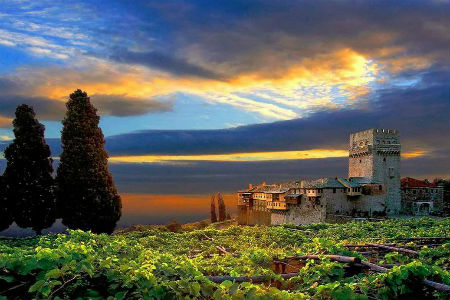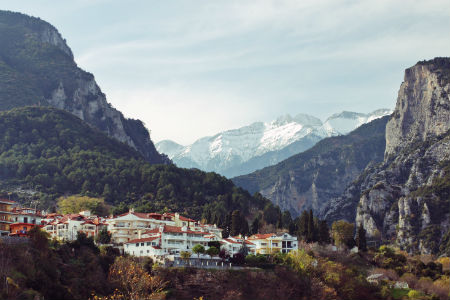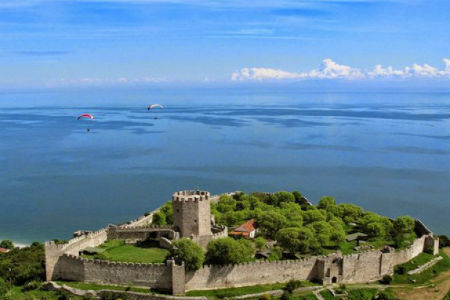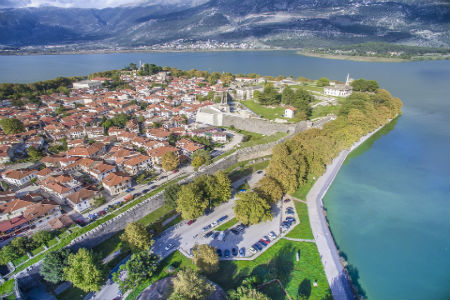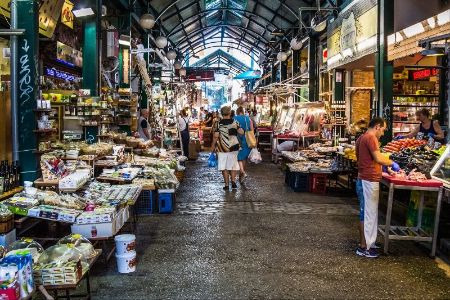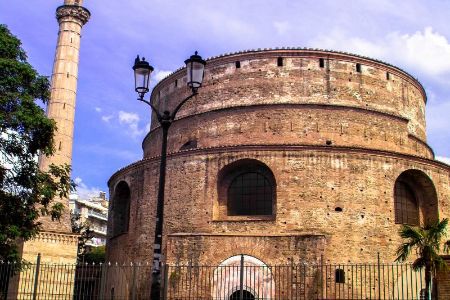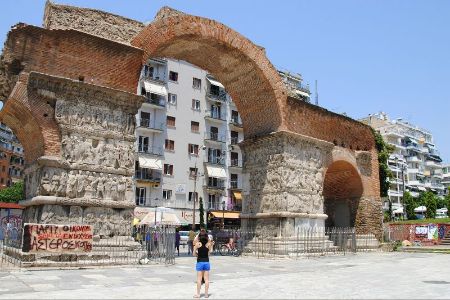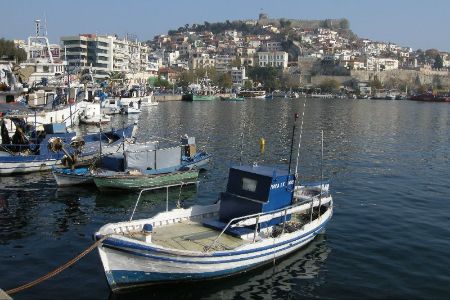4.000 years of Greek History and Civilization
Macedonia
Wander. Reveal. Excite.
Pack your bags, choose your path, and let the adventure begin!
About Macedonia - Facts and Figures
Macedonia is the largest region in Greece, covering the territory of ancient Macedonia, the fatherland of Alexander the Great. It extends between the Pindus Mountains and the Nestos River on the broadest limits of the historical area of ancient Macedonia in Northern Greece, defined to the north by the border with North Macedonia and Bulgaria east of Thrace to the south of Thessaly and the Aegean Sea and west of Epirus and Albania.
Macedonia consists of the prefectures of Thessaloniki, Halkidiki, Kavala, Drama, Serres, Kilkis, Pella, Imathia, Kastoria, Florina, Kozani, Grevena and Pieria. Macedonia has a long and rich history. Here is Olympus, the seat, according to mythology, of the ancient Dodecateum, as well as Dion, Pella and Vergina, places of worship and administrative capitals of the ancient region. The name of Macedonia comes from Greek mythology, which was passed in the main Ancient History and first recorded by Herodotus. Central Macedonia is the most popular tourist destination in Greece with more than 4 million tourists each year.
There is also the self-governing monastic community of Mount Athos on the peninsula of Mount Athos in Halkidiki, with its 20 monasteries, one of the most important centers of Orthodoxy worldwide, as well as the city of Thessaloniki, the metropolis and the main city of Macedonia, center of northern Greece and “co-capital” of Greece. The continental part of Macedonia is a landscape defined mostly by high elevations and massive mountain ranges covered by rich forests. The highest of the country, Mount Olympus, the dwelling of the twelve gods of ancient Greek mythology, is towering in the southern part in the magnificent scenery. Rich rivers and calm lakes, along with countless traditional villages, large and small, make this region a perfect destination to explore: there are excellent hiking and trekking routes, an endless variety of outdoor activities offered, while throughout the region there is a number of ski centers, like the one at Seli (Verria prefecture), at Vassilitsa (Grevena prefecture), Kaimaktsalan (Pella prefecture) and Vitsi (Kastoria prefecture).
Popular Destinations in Macedonia, Greece
The captivating city of Thessaloniki
Thessaloniki, founded in 315 BC and today the second largest city in Greece, is located in Central Macedonia along the Thermaic Gulf. You can visit the city’s ancient remains as a tourist and see places like the White Tower and the Roman Forum. Additionally, you may enjoy the wonderful cuisine and lively nightlife. Have you visited Thessaloniki before? What area of the city was your favorite?
Mount Athos: The Spiritual Heart of Greece
Travelers can get a look into the culture of Eastern Orthodox monasticism at Mount Athos, a special tourism destination. I have personally experienced the serene simplicity of its way of life and the breathtaking beauty of its monasteries and chapels in my role as a tour guide. But a common query among tourists is: Who is permitted to enter Mount Athos?
Exploring the Hidden Gems of Pieria
Pieria (Olympic Riviera) Named after the mythical princess Peirene, daughter of magical river gods, Pieria is one of many hidden treasures nestled within mainland Greece. Situated east of Thessaly region, Pieria offers natural beauty and stunning landscapes perfect for nature enthusiasts looking to explore Europe’s highest mountains – Olympus Mountains.
Thassos Island: A Greek Paradise
Impressive rock formations surrounded by the Aegean Sea, quaint fishing villages, golden sandy beaches… Welcome to Thassos Island, where the Mediterranean meets with adventure! Thassos boasts archaic ruins juxtaposed against vibrant nightlife and authentic Greek cuisine. The island boasts stunning beaches, crystal-clear waters, and a rich history.
Halkidiki: A Serene Getaway for All Seasons
Visit Halkidiki for a serene escape tailored to your interests year round; spring/summer offers beautiful sunny days while autumn/winter showcases milder temperatures perfect for walking, biking, and sightseeing without the crowds of peak season. Kassandra, Sithonia, and Athos are the three peninsulas that make up Halkidiki. Have you been to Halkidiki before?
Vergina: Experience Royal History
70 km west of Thessaloniki. Vergina was the first capital of the Kingdom of Macedonia. What you will see: The royal tomb of King Phillip II (Alexander the Great’s father). The Palace and the Theatre (with a fine mosaic floor), the Temple of Eukleia, the Acropolis and the city walls, and the burial ground with more than 300 tumuli – some dating back to 11th century B.C.
Kastoria: A Haven for Wildlife Lovers
Kastoria, located in northern Greece, is a hidden gem that’s often overlooked by travelers. Nestled amidst stunning natural landscapes and rich historical backgrounds, this enchanting city promises a truly unique experience for every visitor. From discovering picturesque villages steeped in tradition to exploring vibrant markets brimming with local delights, there’s something here for everyone.
Kavala: Where History Meets Modernity
Kavala is a perfect destination for anyone seeking culture, history, good food, and relaxation on a stunning seacoast. With the clear blue waters of the Mediterranean just moments away, visitors cannot resist spending time soaking up the sunshine and taking dips in the invigorating waters. Kavala has many important archeological sites such as Philippi, Amphipolis, and Nea Poteidaia that provide insight into the region’s rich history.
Pella - The Land of Alexander the Great
Pella, located in northwestern Greece, offers visitors a unique blend of ancient history and modern charm. For nature lovers, the wetlands near Pella are a great place to go birdwatching. The surrounding hills and countryside also offer scenic hiking and biking trails, making Pella an ideal destination for outdoor enthusiasts. Today, Pella continues to captivate visitors with its rich cultural heritage and stunning natural beauty.
A Journey Through Drama
Drama is a beautiful and historical city located in northern Greece. It is a hidden gem that offers breathtaking views, traditional Greek architecture, and plenty of activities for tourists to enjoy. Drama has been ruled by various empires throughout the centuries, including the Ottoman Empire and the Byzantine Empire. Today, visitors can still see remnants of these ancient civilizations in the town’s architecture, art, and culture.
Petralona Cave - A Journey Through Time
Petralona Cave is a stunning natural wonder located in the Halkidiki region of Greece. The cave’s unique rock formations and prehistoric artifacts make it a popular destination for tourists and history enthusiasts alike. As someone who has visited Petralona Cave, I can attest to its breathtaking beauty and fascinating history. But what makes this cave so special, and what can visitors expect to see when they explore its depths? Let’s dive in and find out!
Explore the enchanting city of Edessa
One of the most beautiful cities of Macedonia is the capital of the Pella Prefecture, the city of Edessa, built by the river Bodas. It boasts a picturesque old quarter, lovely architectural buildings, monuments, and churches, but most of all, a one-of-a-kind spectacle: its impressive waterfalls, unique throughout Greece. From its stunning natural beauty to its rich history and vibrant culture, Edessa has something for everyone.
Serres: A City Rich in History and Culture
Nestled within rolling hillsides flanked by towering mountains and verdant valleys, Serres exudes an atmosphere of both tranquility and vitality. With its rich history, vibrant culture, and stunning natural beauty, Serres has something to offer everyone. One of the most impressive historical sites in Serres is the Fortress of Serres. So why not plan your next trip to Serres and discover this hidden treasure for yourself?
Kavala: The Coastal Paradise
Kavala is one of those rare places that offers breathtaking beauty combined with a rich historical past that dates back centuries. With ancient ruins, charming old neighborhoods, stunning natural scenery, and beautiful beaches, Kavala promises every visitor an unforgettable experience. Kavala boasts two entries in UNESCO’s tentative list for inscription in the World Heritage List – the Archaeological Site of Philippi and the Old Town of Kavala.
How to get to Macedonia
By Ferry
The Minoan Lines “Deadalus” ferry connects Thessaloniki to Crete, Santorini and other islands in between.
Port of Thessaloniki
A’Provlita Limenos, Thessalonikis, 54110 Thessaloniki, Greece.
Tel: +30 2 310 593 121
Fax: +30 2 310 510 500
Central Port Authority of Kavala
Tel: +30 2510 223716, 224967, 224472
Fax: +30 2510 223628
Keramoti Harbour Office
Tel: +30 2591 051204
Further information about Greek ferries
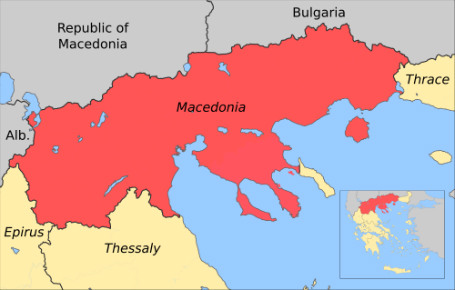
By Air
Macedonia has two international airports – Thessaloniki Airport and Kavala Airport. Both airports are well-connected to major European cities and offer frequent flights to and from Athens.
The biggest airport is the “Makedonia” international airport in Thessaloniki (or Salonica), code: SKG. You can also drive, take the train or bus to Thessaloniki, depending on where you’re coming from. Kavala Airport is a smaller airport located about 30 km from the city of Drama. It serves a limited number of airlines, including Ryanair and Wizz Air. Other airports in Macedonia: Kastoria, code: KSO, Kozani, code: KZI
By Bus
The intercity bus network in Greece is extensive and well-connected. KTEL is the main bus company in the country and operates buses to all major cities in Greece.
By Car
Distance to Athens: 506 km (about 4.5 hours drive time). Most of the road is a high-speed motorway, but there are several narrow and winding stretches you must watch out for.
Climate
In the Macedonian coastlines, the climate is mild and has the characteristics of the Mediterranean climate. Advancing into the interior, however, which is isolated by the beneficial effect of the Aegean Sea and is surrounded by extended mountain ranges, the climate becomes continental.
Getting Around Macedonia, Greece: Tips and Information
Getting around Macedonia, Greece is easy and convenient.
By Taxi : Taxis are a convenient way to get around Macedonia, especially if you’re traveling with a group of people. You can hail a taxi on the street or book one in advance. Taxis in Macedonia are metered, and the fares are regulated by the government.
By Rental Car : There are several car rental companies in the region, including Avis, Hertz, and Budget. Also, keep in mind that driving in Macedonia can be challenging, especially in the cities. Make sure to obey the traffic laws.
By Train : The train network in Macedonia is operated by TrainOSE. From Thessaloniki, you can take a train to other cities in Macedonia. The ticket prices for trains in Greece are affordable, making them a popular choice for travelers on a budget.
Macedonia Attractions
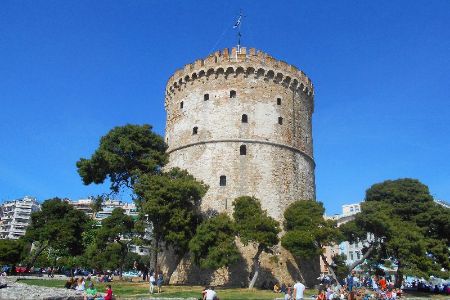
White Tower Thessaloniki
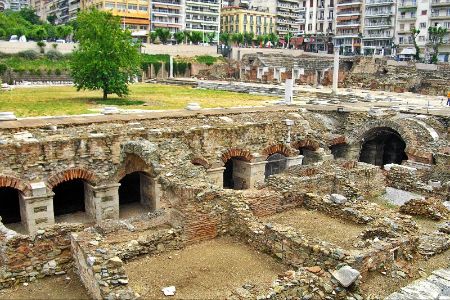
Roman Forum Thessaloniki
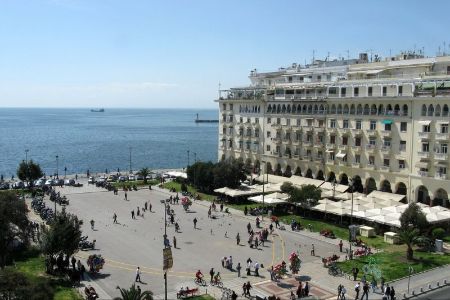
Aristotelous Squere
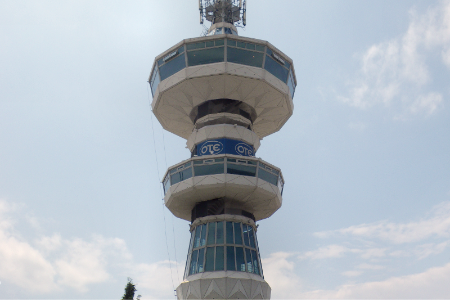
Thessaloniki OTE Tower
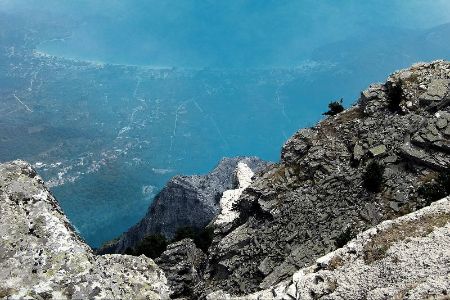
Mountain Ipsarion
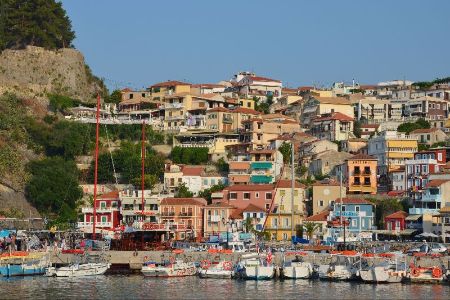
Parga Epirus
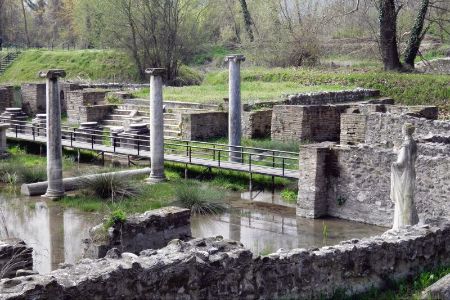
Ancient Dion
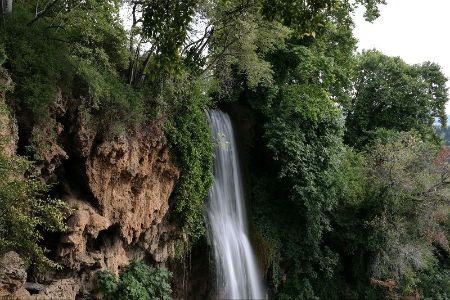
Waterfall Edessa
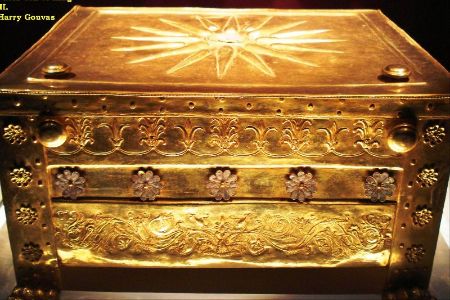
Vergina Tomb Phillip II
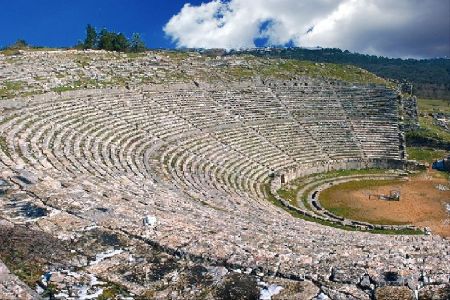
Ancient Theatre Ioannina
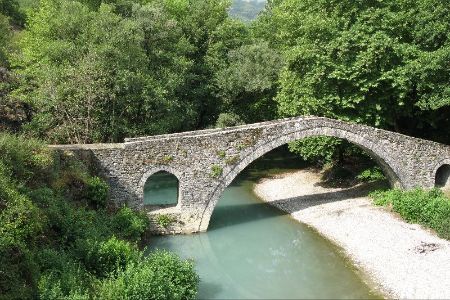
Epirus Zagori
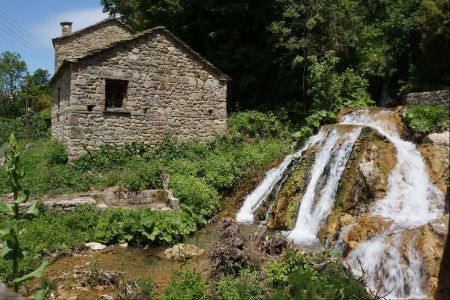
Falls in Pindus National Park
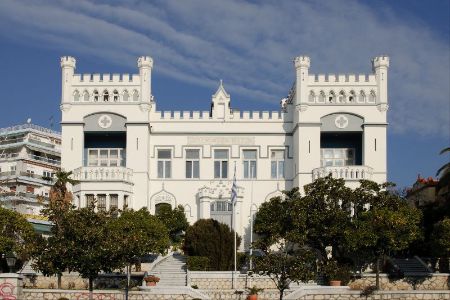
Kavala Town Hall
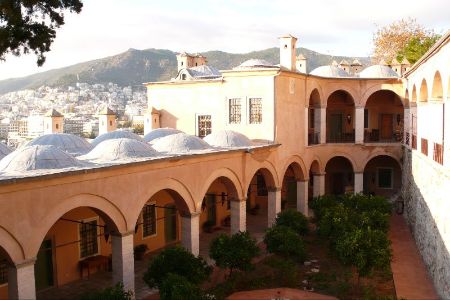
Imaret Kavala
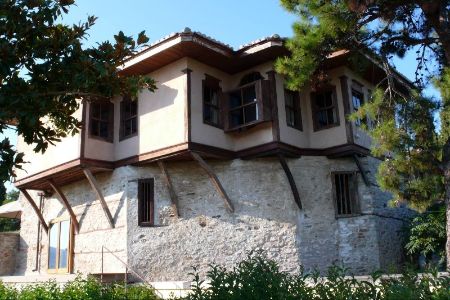
Mohammed Ali House Kavala

Vergina Tomb
Beaches in Macedonia
Some of Greece’s most breathtaking beaches may be found in Macedonia. If you’re looking for a summer holiday, Halkidiki is a popular destination known for its crystal-clear waters and golden sands. Pieria and Kavala are also great options, boasting fabulous beaches and a laid-back atmosphere.
Where to Stay
Macedonia has a range of accommodation options to suit any budget. Thessaloniki offers luxury hotels and resorts for those seeking a lavish experience, while Halkidiki has a range of affordable hotels and holiday apartments. For a more unique experience, you can also try staying in a traditional Greek villa.
Sightseeing
Dion, Vergina, Pella, and Philippi are must-visit destinations that showcase the region’s ancient heritage. These archaeological sites offer a glimpse into Macedonia’s fascinating past and are sure to leave you awe-inspired.
Food and Drink
Greek cuisine is renowned around the world, and Macedonia is no exception. The region is known for its delicious traditional dishes, including moussaka, spanakopita, and souvlaki. Wash down your meal with a glass of Greek wine or ouzo, a traditional Greek liquor.
Got a Question?
FAQ
Ancient Macedonia and ancient Greece shared a common history and cultural heritage.
Over 40 different ethnic groups lived in Macedonia once. They included Pelagonian speakers, Orestae, Brentii, Dardani, Enchelii, etc… and even several Greek tribes. Eventually, all these people blended into one larger group sharing common customs, language, & traditions called Makedones or “highlanders”.
The official language in ancient Macedonia was Old Greek, which was similar to Classical Greek spoken in ancient Greece.
There were slight dialectal differences, but both groups could generally understand each other.
Politics & Warfare: Ancient Greeks often formed leagues (e.g., Amphictyonic League) to coordinate policies and defend themselves against outside threats.
Ancient Macedonia played an important role in these alliances, particularly after King Philip II became leader and began expanding his kingdom through military conquests.
Eventually, he conquered most of Greece, becoming leader of the League of Corinth and initiating projects such as the construction of the Temple of Apollo at Delphi, promoting panhellenic unity.
His son Alexander the Great continued this policy by spreading Greek culture throughout his vast empire.
Philosophy & Education: Ancient Greek philosophers traveled to teach in the royal court of Macedonia, influencing not only the education of Alexander the Great but also shaping intellectual discourse within the region.
Population movements: Over time, populations intermixed, with Greeks settling in Macedonia and vice versa.
The official language of Greece is Greek, which is also widely spoken in Northern Macedonia (formerly known as “Macedonia”). Other minority languages spoken in Northern Macedonia include Albanian, Romani, Turkish, and Serbian.
Prior to 2018, the country located in southeastern Europe was referred to as “Macedonia.” This name led to a long-standing dispute with neighboring Greece, which has a region called Macedonia as well.
To resolve this issue and improve relations between the two countries, “North Macedonia” became the new official name for the former Yugoslav Republic of Macedonia in February 2019.
Despite some objections from conservative groups within the country, the change has brought greater stability and increased cooperation with Greece, NATO, and the European Union.
Therefore, the main differences between Macedonia and North Macedonia involve their names rather than geographical locations or ethnicities; however, the changes could lead to significant shifts in national identities and policies over time.
The “Macedonia naming dispute” refers to a conflict between Greece and the country then known as Macedonia regarding the latter’s constitutional name since gaining independence after the breakup of Yugoslavia in 1991.
Many Greeks felt that the new state’s adoption of a name containing the word “Macedonia” implied a territorial claim on the northern Greek province bearing the same name, and even more controversially, on ancient Greek heritage tied to Alexander the Great and his kingdom of Macedonia.
After a United Nations mediation effort spanning decades, the government of Zoran Zaev in Skopje reached an agreement with Alexis Tsipras’ administration in Athens to rename the nation as “North Macedonia.” While opposition to the deal remains strong among parts of both populations, the renamed country officially joined NATO in 2019 under its new designation, ending one of the most contentious diplomatic disputes in recent history.
Yes and no.
Geographically speaking, Macedonia includes the north of modern Greece, but administratively the country bearing that name gained independence as a separate entity following the collapse of the Socialist Federal Republic of Yugoslavia during the 1990s Balkans Wars.
For this reason, Greeks often use terms like “Aegean Macedonia” or “Greek Macedonia” to distinguish the region from “Skopje Macedonia”, the seat of government and capital city.
There have been a number of tensions around claims of cultural legacy associated with Philip II, father of Alexander the Great, by officials in the government of FYROM/South Illyria/North Macedonia ever since the end of the Cold War.
These issues were ultimately resolved through mediation resulting in the Prespa Agreement, whereby the renaming of the ex-Yugoslav republic referenced above came into force last year.
The ethnic structure of the Greek Macedonia region is complex and diverse, with a variety of different ethnic and linguistic groups represented. Besides a Greek majority other significant groups include the Turkish minority, the Roma (or Gypsy) population, and the Slavic-speaking communities. The Turkish minority in Greek Macedonia is primarily concentrated in the region of Thrace, which borders Turkey. Perhaps the most contentious ethnic group in Greek Macedonia is the Slavic-speaking community, which is primarily concentrated in the region of Western Macedonia. The exact size of this community is difficult to determine, as many members do not identify as “Slav Macedonians” and instead consider themselves to be Greek.
Although much of what tourists often wish to visit in Greece may depend on personal preferences and seasonal conditions affecting destinations, some widely recognized places well worth exploring in the area near Thessaloníki include but aren’t limited to the following UNESCO World Heritage sites, archaeological ruins, museums, historical landmarks, scenic countrysides, or coastlines: Vergina Royal Tombs & Museum (archaeology): featuring tombs of ancient kings and frescoes; opened in 1977
Arch of Galerius & Rotunda (Roman structures): impressive sights amidst urban settings
Palace of Philippos (ancient architecture): restored remnants from the early Christian period
Byzantine Castle (medieval site) with Eptapyrgio Fortress for a panoramic viewpoint
Aristotle Square & Stoa Modovou in Ano Poli Old Quarter
Monastery of St. Nicholas Orphanos + Osios David (Byzantine remains near Veroia)
Lake Kerkini Nature Reserve : birdwatching paradise popular among eco-tourists
Pella (ancient excavations representing diverse cultures & architectural styles)
Mount Athos (‘Holy Mountain’) Autocephalous Orthodox community & spiritual center on the peninsula/UNESCO site
Meteora : breath-taking rock formations hosting historic monasteries dating back to medieval times.
The cuisine of Macedonia, Greece is diverse and influenced by the region’s long history and cultural heritage.
The northern regions of Greece offer unique and delicious local cuisine that reflects their geographical location close to Albania and Bulgaria.
Here are some regional specialties you might want to try: Sarma – Rice and/or ground meat filling rolled up in pickled cabbage leaves or vine leaves, typically cooked in a pot with dill, onion, garlic, white wine, olive oil, or meat stock until fully tenderized and fragrant.
Grekos Tyropitas – Triangular-shaped pastries filled with soft white cheese similar to ricotta, dotted with fresh or preserved fruit such as raspberry jam, apricot, quince paste, or raisins, then folded into triangles with phyllo dough, brushed with butter and glazed with egg wash. These treats are perfect for breakfast or tea-time snacks.
Trigona Panorama – Pastry stuffed with honey, sesame seeds, and walnut halves, then baked golden brown. Popular during Easter and Christmas holidays.
Pasha Boureki – Savory casserole layering sautéed ground meat, eggplants, onions, peppers, garlic, tomato sauce, spices such as nutmeg, cinnamon, allspice, peppercorns, thyme, and rosemary with fine bulgur wheat. Covered with a layer of tomato purée before baking in the oven till hot and bubbling.
Karidopita – Carrot cake made with grated carrots blended together with eggs, flour, sugar, oil, milk, baking powder, baking soda, and ground walnuts or pecans often toasted in melted butter for added richness.

